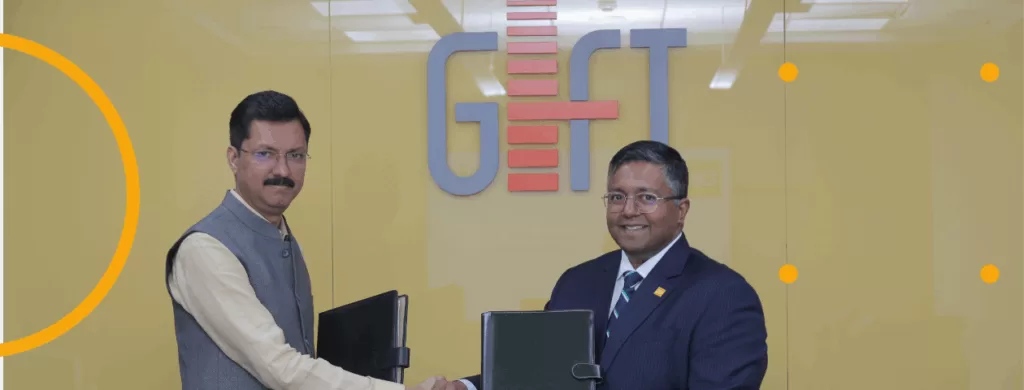
Data collection and analysis are becoming increasingly important and pivotal to the effective management of a postsecondary institution, but the adoption of data-driven decision making at many institutions is a slow process blocked by numerous critiques and challenges.
In an interview with evolllution, Ben Sowter shares his thoughts on the role data can play in institutional management and reflects on what it takes to overcome some of those roadblocks. To learn more about what it takes to make data part of the institutional fabric, register for the EduData Summit.
The EvoLLLution (Evo): Why is data so important to the effective management of a modern postsecondary institution?
Ben Sowter (BS): Data is vitally important to the effective management of anything, particularly any complex system. A postsecondary institution can be metaphorically compared to the human body, with a brain, heart and vital organs. When we look at a person’s health we can examine them when they are ill or injured, when something is overtly wrong. Or we can look at their health, nutrition, and fitness, essentially when they are fine but could perform better. In either case, data is vital. At the most basic level we might look at pulse, temperature, blood pressure, recovery rate, lung capacity and calorie intake, and a more sophisticated diagnosis or health check might require blood tests, x-rays, MRI scans, neural response tests and any number of lenses designed to build a higher-definition profile of the subject. It’s no different with the organization—data is needed to identify and eliminate malaise and to measure, leverage and maximize performance. The more data we have the more precise the treatment can be.
To take the analogy still further, like a human, a university is a living interdependent system, changing in time. If an action taken to improve one aspect of performance is causing a setback in another, it’s unlikely to be detected if the general health and well-being of the subject are not being continuously assessed. Frequent, systematic assessment of what can be measured is likely to present opportunities for earlier action and thus improve competitiveness.
One of the concerns often raised is that what can be measured is not everything of value, but that’s like saying that before x-ray machines were invented we shouldn’t take a temperature or a pulse. Whilst an incomplete picture can be misleading in some circumstances, for the most part, it’s a big improvement on flying blind.
Evo: How can universities leverage data to influence the experience they’re delivering to students?
BS: There are countless ways that universities can do, and are doing, this. Some of the most obvious ways to gather data center on course evaluations and student surveys, but it can start with enrollment rates, application rates, completion rates, dropout rates, diversity data, attendance rates, turn-in rates for coursework, contact hours, library stocks and usage statistics, accommodation data, clubs and society counts, internet connection speeds, WIFI availability and much, much more. These data can be used in a relatively rudimentary fashion to benchmark the provision of services to students on campus and beyond, and for the most part, have been available for years.
Whilst in many cases, universities are behind the curve on leveraging simple metrics like those listed above, let’s focus a little on the kind of richer more longitudinal data that they ought to now be able to explore. Learning Management Systems have been in play for over twenty years and new iterations and actors in this market have been attempting to make these systems more intuitive and more pervasive, with an increased number of touch points with the student. Such systems promote opportunities to monitor student engagement on a much more real-time basis. No longer is it necessary to wait until the end of the course to gather evaluations, or to measure sentiment through a one-time survey. Institutions have access to an increasing volume of data on collective habits and sentiments of their students and should be able to use it to design better, more engaging programs and design more creative and inspiring environments to augment both the learning experience and the general life experience, that young people increasingly expect from their university.
Evo: What are some of the most significant roadblocks standing in the way of college and university leaders being able to leverage data?
BS: Leadership is more art than science. It requires vision and a human touch and can be seen as the antithesis of data-driven management. In fact, in our data-driven age it might be that leadership often manifests itself in deciding when not to follow the data. Still, diagnosing a problem and not choosing the same solution to it as everyone else would is often the defining moment in recognizing best-in-class leadership and history provides countless examples of where leaders knew something but chose not to take the most self-evident path. The idea that data, knowledge, and insight somehow get in the way of leadership is about the silliest idea ever, yet it is an idea that abounds in many universities and leads to a reticence to invest in better information. Obviously, the biggest obstacle to university leaders being able to leverage data in the absence of it.
One concern that fuels the resistance to investment in data is the sense that it will create an imbalance against things that are harder to measure. If we measure research, we might lose focus on teaching; if we measure science, we might lose focus on humanities. It’s not the presence of data that create these imbalances, but a lack of visionary leadership. Perhaps an instinct to let the data lead for us, rather than simply inform and empower us. There are plenty of datasets that support the hypothesis that investment in art and culture augments rather than diminishes or distracts from the pursuit of knowledge in science, and even more to suggest that these are non-negotiable and unarguable assets to civilized society and community.
The final roadblock is not one to data specifically, but a resistance to change in general. The world is moving increasingly quickly and data provides a lens to view and respond to that change at a pace that traditional university governance structures are not comfortable with. In most long-established institutions, the leader of the university is more Prime Minister than Supreme Leader; more Board-appointed CEO than Founder-Owner and that has an effect on institutional agility. In many cases that can be a good thing—accountability is vital—but in much of our research, we are seeing evidence that institutions making efforts to provide their leadership with more freedom (and fewer committees) are those better equipped to respond to data and move their performance needle.
Evo: How do you overcome the cultural bias against data-driven decision making on a postsecondary campus?
BS: It’s ironic, isn’t it. That an organization made up principally of academics who would counsel their students to make better use of data, to provide more evidence, to cite more sources would be resistant to those ideas being brought to bear on their own reality?
I would start by changing the language. I don’t think data should be driving decisions and I can understand why institutions and academics would smell danger in that. Data-driven decision making sounds not much more than a hair’s breadth from “robots will steal our jobs” which seems to be a mantra on the wind these days. However, whilst data might be able to identify strengths and weaknesses relative to the competition, a robot is less effective at interpreting identity and distinctiveness in that data.
When looking at one institution in isolation, it might be tempting to drive it towards looking like everyone else, but data can also be used to look at what makes an individual or an institution unique. People seem to fear that data will be used to homogenize and ultimately erase any sense of what makes a place or an institution distinctly theirs, and this is at the heart of what drives such bias. However, it can just as easily be used to identify, protect and augment what makes that place or institution special and doing that well needs an artful touch, not a robotic arm.
Evo: What advice would you share with postsecondary leaders trying to make data a more significant part of their institution’s operating ethos?
BS: Data is not a threat. Ignorance is. Fearing to know something for the risk of the decisions we might make if we do seems like the antithesis of everything on which these institutions were built. Benjamin Franklin said that “An investment in knowledge pays the best interest” and if you are not investing in a better dataset on your own activity and performance, then you can guarantee that many of your competitors, rivals, and peers are. Whilst you can all draw on your character, values, and identity to keep pace with the amazing race, you’ll be trying to do so without a map, whilst they have GPS. GPS can still take you to the wrong place, but most of us would still prefer to have it.
As a counterpoint to that, in saying, “The aim of education is knowledge, not of facts, but of values” William Burroughs seems to deftly summarize the friction between a desire to better inform decision making with wider, stronger and deeper data with a thinly-veiled belief that doing so will automatically subjugate character, values, and identity.
I would advise a university leader to prioritize the use of what data they have to first identify what makes their institution unique, distinctive and special and what makes those staff and students that love it, feel inspired by it. First and foremost amongst their leadership tasks is distilling, protecting and augmenting the special identity of the institution they have been awarded the privilege of leading. If they can demonstrate to their community and stakeholders that data can be drawn upon to make them more effective in pursuit of this mission, nay, that it is a vital requirement of their office in this regard, then that community will come to value and respect data as a powerful ally, as we do here at QS, rather than as a seductive but ultimately treacherous swine, as seems to be the case in some quarters today.
Obviously, at a more immediately actionable level, another effective way is to get a stakeholder community as much exposure as possible to what is happening elsewhere, in other sectors and in other institutions, not necessarily to emulate their investments and their decisions, but in order at least to know what the options and best practices are. The EduData Summit is quickly establishing itself as one of the world’s most focused showcases of best-practice data utilization in international higher education and would be a great place to discover new possibilities and network with other university seniors that have faced, and in some cases overcome similar inertia.
We invite all universities interested in learning how to improve the processes of using data and analytics to attend the EduData Summit.



